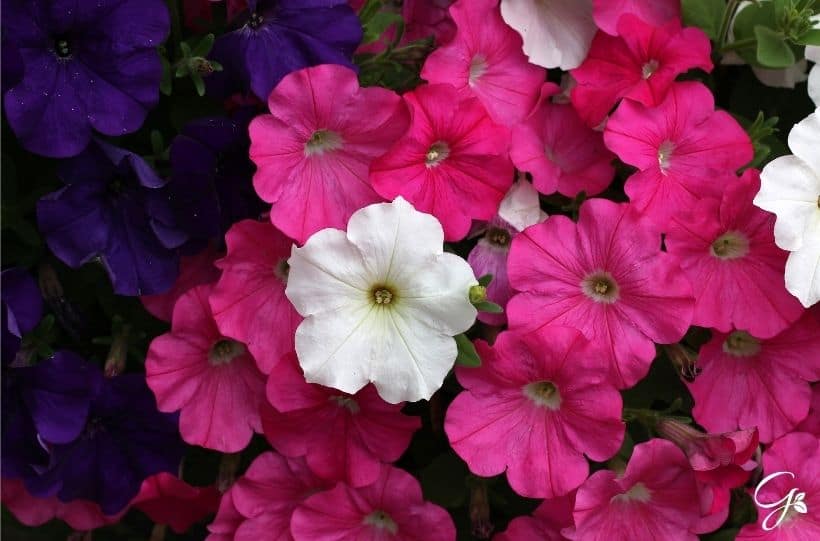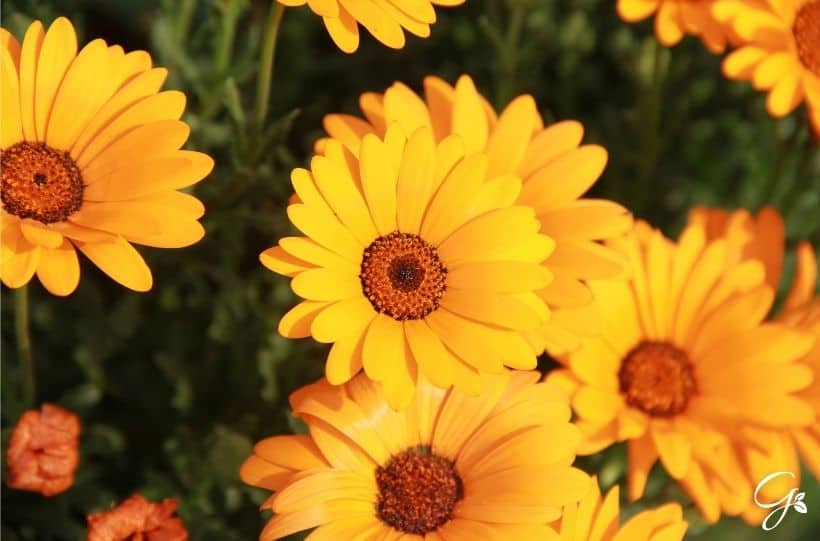4 Best Spring Bedding Plants To Give Your Garden A Wow Factor This Spring
This post may contain affiliate links. Please see the privacy policy for details.
Spring bedding plants are an ideal way to spruce up any outdoor garden space after winter. Though they often aren’t long-lasting, bedding plants are quick growing and offer that much-needed vibrant display of color after a long, cold winter.
If you are looking for a way to add a variety of plants to fill your sparse garden borders, pots, and hanging baskets, spring bedding plants are the best choice.
This post will share 4 spring bedding plants that are eye-catching, beneficial to pollinators, and will help to fill your garden whilst your spring perennials are coming into season.

What Are Bedding Plants?
Bedding plants are usually annuals or treated as annuals that are grown to fill garden beds or containers such as pots and hanging baskets. They are used by gardeners in spring as they grow quickly and can provide that visual impact gardeners are looking for after winter.
Spring bedding plants are ideal for offering a temporary display of life, whilst dormant spring perennials return and summer plants begin to germinate.
When Should You Plant Bedding Plants?
Ideally, spring bedding plants should be started in growing trays indoors around 8 weeks before the last frost.
Most bedding plants are annuals and are not hardy, which means they won’t survive in the frost. The ground is also too solid from winter to early spring and needs time to thaw before being workable.
Planting indoors allows the seedings time to germinate within a warm and sheltered area. It provides them time to grow ready for when the ground is softer and the temperatures have increased.
At this point, your indoor seedlings can be planted outside in borders, pots, and hanging baskets. Within 50-70 days of being grown from seed, they will start to bloom.
Here are 4 Spring Bedding Plants For Your Garden
These bedding plants are treated as annuals with a quick growing time, helping to provide your garden with blooming flowers whilst your perennials come into season. They are often removed after their flowering season as, if left outdoors, they will not survive the winter frost.
Petunias
Petunias make an excellent spring bedding plant. They are available in a variety of colors including purple, white, and red, with many two-toned varieties. Their delicate petals pop with color against subtle green leaves.

Though many varieties of petunias are perennial, when planted as border plants they are treated as annuals. Petunias cannot survive colder weather and frost and hence are often removed at the end of their growing season.
Petunias are best started from seeds indoors. Once they have germinated and the weather has warmed up outside, they can be planted outdoors. Ensure the frost has completely passed before transferring your petunias outdoors. They prefer to be planted in well-drained soil with access to full sunlight.
Petunias have a long flowering season from late spring to the end of Autumn. To ensure they continue flowering, remove dead flowers to encourage fresh growth.
Pansies
Similar to petunias, pansies can be perennial but as they do not do so well during the winter, they are removed once they have finished blooming.
Pansies are stunning two-toned flowers in blues, pinks, oranges, purples, and yellows. Though they have a short flowering season when flowering they provide multiple flowers offering a beautiful, full display when planted in groups.

This spring bedding plant can either be purchased in seedling packs of 4 or 6 or can be started indoors from seeds. As pansies prefer cooler weather, they can be planted after the last frost and whilst the temperatures are still cool.
Plant pansies in groups for an eye-catching display and select an area of your garden with good drainage and full to partial sunlight. They do require regular watering and will need deadheading to promote new growth.
Once summer is in full swing, your pansies will die down as they do not enjoy the warmer temperatures. At this point, they are best dug up and removed from the garden to make space for summer plants.
Gazanias
These daisy-like flowers offer a golden glow to your garden in late spring. With long, layered petals surrounding a bold, yellow center, gazanias provide a show-stopping flower to add to your borders.

Gazanias are best planted after the first frost between February and April. They can be sown indoors during winter ready to transfer outside in warmer weather during spring. Gazanias prefer good drainage and are best planted in full sunlight.
These spring plans are late bloomers, flowering from late Spring till Autumn. After this, they do not grow well in the winter and will die back. Most gardeners remove them from the garden at this point and start new seedlings during late winter.
Wallflowers
Wallflowers are a perfect spring bedding plant with clusters of tiny flowers in vibrant colors from yellow to purple. Though small and best planted at the front of your border to be seen, their cluster of flowers packs a mighty punch when not much else is flowering.

Wallflowers, unlike many bedding plants, flower earlier in the season often from March onwards. This provides vital food for pollinators, but also adds a splash of color to your garden alongside spring bulbs.
This spring bedding plant has a slightly different planting pattern to the others, in that seeds require sowing in February and then planting in September. The plants are biennial, so spend the first year focused on root and stem growth ready to flower the following March.
They are best planted in well-drained soil with access to full or partial sunlight.
Wallflowers are also available as perennials and can be a great option if you are looking for a plant that requires less maintenance. Perennial versions flower almost all year from March to November and return year after year.
Not only does this help to fill your garden with easy-to-maintain flowers, but offers a vital food source to pollinators throughout the year.
Each of these spring bedding plants will help bring your garden back to life after a long, cold winter. When treated as annuals, they do require replanting the following year. However, this ensures that each season has a successful, full bloom and requires no care during winter.
Not only do these 4 spring bedding plants add a splash of color during spring, but they also offer vital food for local pollinators. To gain the most from these flowers, ensure to plant each variety in bunches together alongside other colors and shapes for maximum visual impact.
For more inspiration on what to plant in Spring, take a look at these posts:
